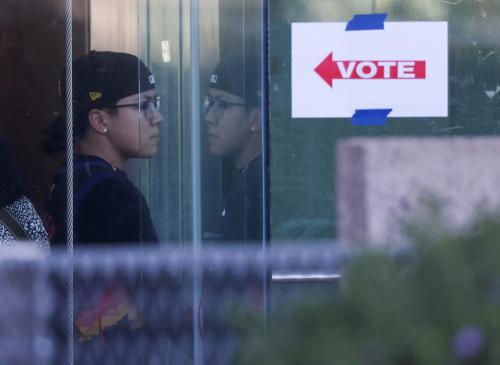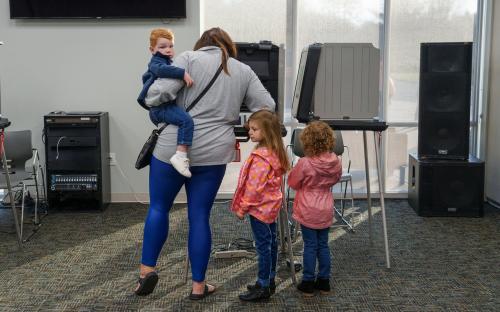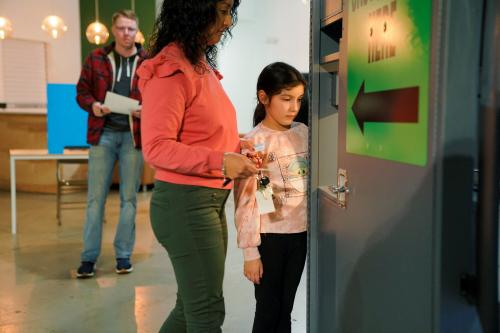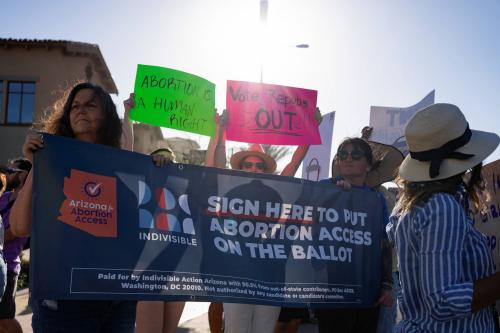In this series we look at how younger voters are likely to impact future elections and American politics going forward.
“The man who is not a socialist at twenty has no heart, but if he is still a socialist at forty, he has no head.” Aristide Briand, (1862-1932), World War I French Prime Minister
This aphorism, which has also been attributed in one form or another to, among others, John Adams, Benjamin Disraeli, and George Bernard Shaw, has become conventional wisdom when people talk about generational change in politics. It may be clever, but it’s wrong.
Research has shown that successful, popular presidents increase the likelihood that generations growing up during their presidency will vote for the party of such presidents when they become eligible to do so and in the decades that follow. This is true whether the presidents were Republicans such as Dwight Eisenhower (Silent Generation) and Ronald Reagan (younger Boomers and older Generation X) or Democrats such as Franklin D. Roosevelt (GI or Greatest Generation), Bill Clinton (Younger Generation X) and Barack Obama (Millennials). By the same token, unsuccessful or unpopular presidents such as Democrats Harry Truman (Silent), Lyndon Johnson (older cohort Boomers) and Jimmy Carter (younger cohort Boomers) along with Republicans Richard Nixon (middle cohort Boomers) and George W. Bush (younger Generation X and Millennials) have created opportunities for the party out of power during those administrations to gain the allegiance of a new generation of voters.
The following graphic, drawn from a Pew Research Center analysis, depicts the partisan direction of recent generational cohorts in successive biennial elections correlated with the identity of the president when that group of voters turned 18. Blue squares indicate that a cohort’s vote was disproportionately Democratic in a specific election, red squares indicate a disproportionately Republican vote and grey squares show no strong partisan direction.
 Source: Pew Research Center
Source: Pew Research Center
It shows that when young voters came of age during the administration of a president who was, during his administration, considered to be “successful” or who received strong job approval ratings, that cohort entered the electorate supporting that president’s political party, and continued to disproportionately vote that way for decades afterward. By contrast, when a generation entered the electorate during the term of a president who, during his administration was seen as “unsuccessful” or unpopular, that cohort rejected that president’s party, both initially and in the long term. As the table illustrates, the dramatic gains Democrats have made with younger voters during and after the Trump presidency provides evidence that these younger cohorts may in fact remain Democratic as they age.
Why this tendency for party identification to be established in people’s first elections? For many, political beliefs, identifications, and behaviors are established in their teens and twenties during what psychologists call “the Age of Maturity.” This shouldn’t be surprising since most people don’t typically think and act one way when they’re young, and then do a sharp about face and change their beliefs and behavior as they become older. Indeed, generational voting patterns show that when a new generation joins the electorate its political loyalties are fully established after the first two or three elections. Then, as they age, the members of a once-emerging generation use their initial perceptions, attitudes and behavioral patterns to help them interpret, respond to, and cope with new political events. The longer those perceptions and attitudes are held, the more useful they become and more firmly they are held and protected — even when new, contradictory information and perceptions produce cognitive dissonance. Or, to use an aphorism that does have some truth in it, older people are more set in their ways.
As a result, the most difficult voting behavior for political campaigns to change is that of the most elderly in the voting age population. Commercial advertisers acknowledge the relative imperviousness of older consumers to change their brand preferences by rarely aiming their appeals at those over forty-nine years old. Because older voters turn out to vote in large numbers, political campaigns spend most of their money on TV ads trying to persuade senior citizens to change their ways and vote for a candidate whose party is not theirs. And the money is often not well spent.
Underpinning the lifelong partisan loyalties of most Americans is their identification with one or the other of the major political parties. The concept of party identification was developed and first described in the 1950’s by four social scientists affiliated with the University of Michigan’s Institute for Social Research in their landmark book, The American Voter. Based on national surveys, the authors found that upwards of nine in ten American adults identified with or leaned to either the Democratic or Republican Party. For the large majority, this psychological attachment was formed when they were young adults and remained constant throughout the remainder of their life.[1] Nearly six decades later, in a replication of the original work, The American Voter Revisited, researchers used a panel of survey respondents interviewed at four different points in time over a seventeen-year period (1965-1982) to demonstrate the long-term stability of party identification once again. A large majority (more than eight in ten) identified with or leaned to one of the parties, and upwards of eight in ten identified with the same party at the end of the period as at the beginning. More recently, in the presidential election years 2000 and 2004, a similar panel showed an equivalent level of willingness to identify with a party and stability in that identification over time.[2]
To be sure, some observers have written that the impact of party identification has periodically ebbed, especially within emerging generations, over the course of American electoral history.[3] However, since the 1950’s, at least 90% of Americans have continued to identify with or lean to one or the other of the major political parties, with members of the two youngest generational cohorts — Plurals (Gen-Z) and Millennials — as likely as their elders to do so. And, most importantly, this psychological attachment to a party has continued to translate into votes. In the 2022 midterm elections, upwards of nine in ten partisans, regardless of age, voted for the party with which they identify or lean.


Because there is so much agreement among America’s two youngest generations on their values and the politics that derive from them, their political loyalty will shape the direction of American politics — its elections and public policies — for the next three or four decades until it passes from the scene and other emerging generations take its place.[4] Both of America’s two parties would do well to recognize and adapt to the generational dynamics now shaping our country.
[1] Campbell, et. al., The American Voter, 1960
[2] Lewis-Beck, et. al. The American Voter Revisited, 2008, pp.141-150.
[3] Mayhew, David R. Electoral Realignments: A Critique of an American Genre, 2002, pp. 18-20 and 64-69.
[4] Lewis-Beck, et.al. The American Voter Revisited, 2008, pp. 159-160








Commentary
How younger voters will impact elections: The more a generation changes, the more it stays the same
May 4, 2023